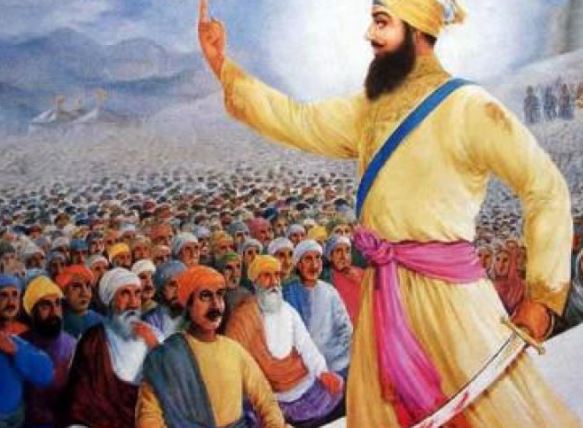Story of the four Sons of Guru Gobind Singh


The four Sahibzade Khalsa warriors princes were the sons of Guru Gobind Singh (1666–1708), the leader of the Sikhs in the Punjab region of the Indian subcontinent during the Mughal reign (1526–1857). In 1699, Gobind Singh (born Gobind Rai) established the Khalsa, an elite warrior band of initiated devout orthodox Sikhs to protect the innocent from religious persecution.
Gobind Singh had three wives and four sons: Ajit, Jujhar, Zorawar, Fateh. All four of his sons were initiated into the Khalsa and all were executed by Mughal forces before the age of 19.
Sikhism honors the illustrious martyred sons of Guru Gobind Singh in the prayer of ardas for their valor and sacrifice as “Char Sahibzade,” the four princes of the Khalsa warrior order.

Ajit Singh was born on January 26, 1687 CE, according to the Sikh calendar called the Vikram Samvat (SV) on the fourth day of the waxing moon in the month of Magh, SV year 1743. He was Guru Gobind Rai’s eldest son, and he was born to the guru’s second wife Sundari at Paonta, and at birth named Ajit, meaning “unbeatable’
He was given the name Singh when he was initiated into the Khalsa at the early age of 12 and drank the immortal nectar along with his family on the first Vaisakhi Day, April 13, 1699, at Anandpur Sahib, where his father took the name Tenth Guru Gobind Singh.
He was martyred at the age of 18, on December 7, 1705 CE at Chamkaur, after he volunteered to leave the besieged fortress with five Singhs and face the enemy on the battlefield.
Sahibzada Jujhar Singh was born on Sunday, March 14, 1691 CE, in the seventh of the month of Chet, SV year 1747. He was the second eldest son of Guru Gobind Rai, was born to his first wife Jito at Anandpur, and at birth named Jujhar, meaning ” fighter”
He was initiated at eight years of age along with his family and given the name Singh at Anandpur Sahib on Vaisakhi, April 13, 1699, when his father Guru Gobind Singh created the Khalsa order of warrior saints.
He was martyred at very early age of 14, on December 7, 1705 CE at Chamkaur where he earned the reputation of being likened to a crocodile for his fierceness in battle, when he volunteered to leave the besieged fortress with five of the last Singhs standing, and all achieved immortality in the battlefield.
Zorawar Singh was born on Wednesday, November 17, 1696, on the first day of the waning moon in the month Maghar, SV year 1753. The third son of Guru Gobind Singh, he was born to the Guru’s first wife Jito at Anandpur, and at birth named Zorawar, meaning “fearless”
He was given the name Singh at the age of nine and was initiated along with his family members Anandpur Sahib in the first Amritsanchar ceremony held on Vaisakhi Day, April 13, 1699.
He was martyred at the age of nine, on Sirhind Fatehghar, December 12, 1705 CE, on the 13th day of the month of Poh, SV year 1762. Zorawar Singh and his younger brother Fateh Singh were captured with their grandmother Gujri, the mother of Guru Gobind Singh. The sahibzade were imprisoned along with their grandmother and were executed by cruel Mughal rulers who attempted to suffocate them inside a brick enclosure.

He was Born on Wednesday, February 25, 1699 CE, the 11th day of the month Phagan, SV year 1755, the youngest son of Guru Gobind Rai was born to the guru’s first wife Jito at Anandpur, and at birth named Fateh, meaning “Victory.
He was given the name Singh when initiated at the age of three along with his family members on Vaisakhi Day April 13, at Anandpur Sahib 1699, where he partook of baptism by the sword, created by his father, and his mother took the name Ajit Kaur, and brought sugar to sweeten the immortal Amrit nectar.
Fateh was attained martyrdom at the age of six on Sirhind Fatehghar, December 12, 1705 CE, the 13th day of the month of Poh, SV year 1762. Fateh Singh and his brother survived being bricked up alive, but then the order was given for them to be beheaded. Seeing the atrocities their grandmother Mata Gujri died of shock in the prison tower.

DISCLAIMER: The author is solely responsible for the views expressed in this article. The author carries the responsibility for citing and/or licensing of images utilized within the text.
